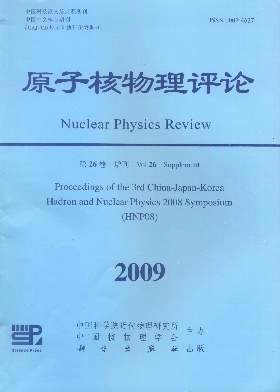Study of Σ*-Δ Interactions
doi: 10.11804/NuclPhysRev.26.S1.148
- Received Date: 1900-01-01
- Rev Recd Date: 1900-01-01
- Publish Date: 2020-05-11
-
Key words:
- dibaryon /
- symmetry /
- chiral field
Abstract: We study the Σ*Δ interaction in the chiral SU(3) quark model and in the extended chiral SU(3) quark model. In these two models, the shortrange interaction mechanism are totally different, one is from the onegluon exchange and another is from the vector meson exchange. The possible reasons of forming strangeness -1 bound states are given. Comparisons between the cases with and without quark exchange effect are made. The results show the quark exchange effect does give attractions to (Σ*Δ)ST=0 52 and (Σ*Δ)ST=3 12 systems, which means the special symmetry is important. Also, we make some analysis on chiral field effect, our results show that the σ exchange dominantly provides the attractive interaction for these two states.
| Citation: | DAI Lian-rong, BAI Li-hui, ZHANG He, #, LIU Jia, FU Yao, TONG De-xin. Study of Σ*-Δ Interactions[J]. Nuclear Physics Review, 2009, 26(5): 148-152. doi: 10.11804/NuclPhysRev.26.S1.148 |






 甘公网安备 62010202000723号
甘公网安备 62010202000723号 DownLoad:
DownLoad: